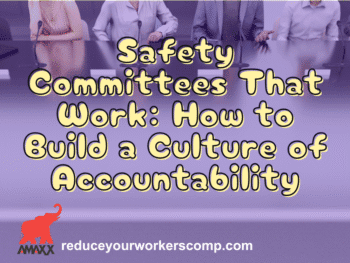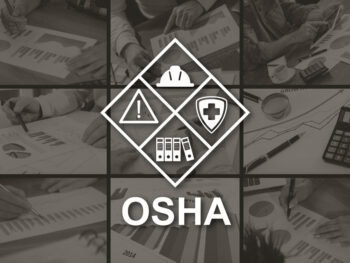An effective Employee Safety Program serves many purposes. Studies show that indirect costs (lost production time, clean up, time to hire or retrain other employees, etc.) can be 3 to 4 times the direct costs. Some studies say the indirect costs are as high as 7-10 times the incurred cost of the claim.
Preventing accidents and promoting a safe workplace is also the right thing to do. Preventing workers' compensation issues from coming up in the first place is the number one thing you can do to hold down your costs.
Implementing a safety program will help your organization:
1. Reduce workplace hazards that can lead to injury or illness (lower frequency rate).
2. Reduce the direct and indirect costs of workplace injuries and illnesses (lower severity, fewer lost workdays, reduced workers' compensation premiums, modification rates and assessments).
3. Protect the organization's most valuable asset, your employees, while improving morale and productivity – it's the right thing to do!
4. Comply with local, state, federal and industry-specific regulations (OSHA, state requirements).
Three Things to Learn Before You Begin:
1. How to develop an employee safety program,
2. How to assess workplace hazards
3. How to ensure employee buy-in and compliance. Remember, compliance is just the start of a safety program.
Safety is a process which MUST have complete management support and buy- in. If management does not "get it" and does not pay attention to it, it will not get done.
Safety must be equal in priority to quality and production. Safety must be integrated into, and work with, all areas of the operation. It must be a core value of the organization, a continuous effort and a way of doing business.
Four things an effective safety program should include:
1. Employee involvement.
2. Worksite analysis.
3. Hazard prevention and control.
4. Training for employees, supervisors and managers. (workersxzcompxzkit)
After you obtain senior management's full commitment and support, and it has been communicated to employees, you can start to develop a safety program. Be sure to involve employees throughout the process.
Author Robert Elliott, executive vice president, Amaxx Risks Solutions, Inc. has worked successfully for 20 years with many industries to reduce Workers’ Compensation costs, including airlines, healthcare, manufacturing, printing/publishing, pharmaceuticals, retail, hospitality and manufacturing. Contac: Robert_Elliott@ReduceYourWorkersComp.com or 860-553-6604.
WC Books: http://www.reduceyourworkerscomp.com/workers-comp-books-manuals.php
WC Calculator: http://www.reduceyourworkerscomp.com/calculator.php
Do not use this information without independent verification. All state laws vary. You should consult with your insurance broker or agent about workers' comp issues.
©2010 Amaxx Risk Solutions, Inc. All rights reserved under International Copyright Law. If you would like permission to reprint this material, contact Info@WorkersCompKit.com
















